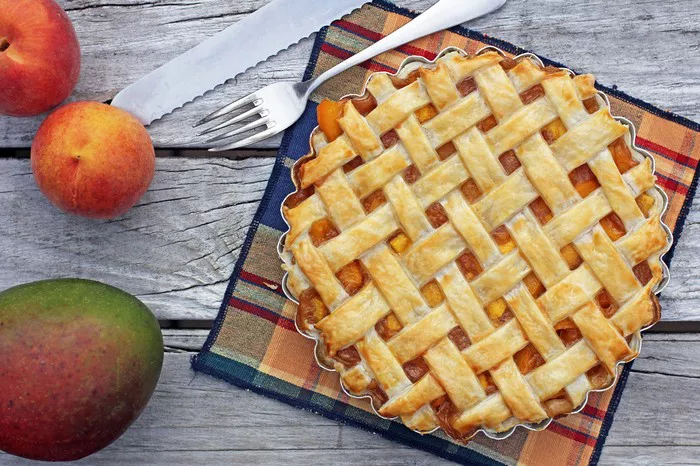Mini pie crusts are more than just a baking shortcut—they’re a blank canvas for creativity. Whether you’re hosting a party, craving a nostalgic treat, or experimenting with portion control, these bite-sized shells offer endless possibilities. But why do tiny foods captivate us so deeply? This article explores delicious recipes for mini pie crusts and dives into the psychology behind our love for miniature foods, comfort eating, and mindful indulgence.
Sweet Mini Pies
Recipe Ideas
Classic Mini Apple Pies
Fill crusts with diced apples tossed in cinnamon, sugar, and a splash of lemon juice. Top with a lattice crust or crumble.
Lemon Curd Tartlets
Whisk lemon zest, juice, eggs, and sugar into a silky curd. Bake until set and garnish with whipped cream.
Chocolate Ganache Cups
Melt dark chocolate with heavy cream, pour into pre-baked crusts, and add sea salt for contrast.
Why Tiny Sweets Satisfy Big Cravings
Psychologists attribute our fascination with mini desserts to “hedonic hunger”—the desire to eat for pleasure rather than hunger. Small portions activate the brain’s reward system without triggering guilt, thanks to “portion bias.” A 2016 study in Appetite found that people perceive mini desserts as “enough” to satisfy cravings, reducing overeating. The visual appeal of tiny pies also taps into “aesthetic hunger,” where beauty enhances the eating experience.
Savory Bites
Recipe Ideas
Spinach and Feta Quiches
Whisk eggs, cream, sautéed spinach, and feta. Pour into crusts and bake until golden.
Mini Chicken Pot Pies
Mix shredded chicken, peas, carrots, and creamy gravy. Top with a second crust for a cozy finish.
Caramelized Onion and Goat Cheese Tarts
Sauté onions until golden, layer over herbed goat cheese, and drizzle with balsamic glaze.
The Comfort Food Connection
Savory mini pies evoke nostalgia, a psychological phenomenon tied to “emotional eating.” Comfort foods like pot pies often remind us of childhood or family gatherings, activating the brain’s limbic system, which processes memory and emotion. According to a 2015 study in Health Psychology, people under stress gravitate toward familiar, calorie-dense foods because they subconsciously seek emotional stability. Mini versions provide the same comfort with less caloric commitment.
Mindful Eating
Recipe Idea
Fill crusts with roasted veggies (zucchini, bell peppers, mushrooms) and a sprinkle of Parmesan.
The Science of Smaller Portions
Mini pies align with “mindful eating,” a practice encouraging awareness of hunger cues and enjoyment of food. The “Delboeuf illusion”—a psychology principle where portion size appears larger on smaller plates—explains why mini pies feel satisfying. By focusing on quality over quantity, these bites help combat “unit bias” (the tendency to finish a portion regardless of size), as noted in a 2021 Journal of Nutrition Education and Behavior report.
Creative Presentation
Recipe Idea
Layer mini crusts with pastry cream and arrange berries or kiwi in colorful patterns.
Color Psychology in Food
Brightly colored foods trigger dopamine release, enhancing anticipation and enjoyment. Research in Food Quality and Preference (2020) shows that vibrant dishes are perceived as tastier and more nutritious. Arranging fruits in gradients or symmetrical designs also leverages “visual satiation,” where aesthetic presentation slows eating and boosts satisfaction.
Nostalgia Baking
Recipe Idea
Fold pie crusts around jam or Nutella, seal, and bake for a portable treat.
The Role of Nostalgia in Food Choices
Nostalgic foods activate the brain’s default mode network, linked to self-reflection and emotional processing. A 2018 study in Social Psychological and Personality Science found that nostalgic eating can reduce loneliness by evoking positive memories. Mini hand pies, reminiscent of school lunches or holiday baking, offer a comforting, sensory-driven escape.
Dietary Inclusivity
Recipe Ideas
Gluten-Free: Use almond flour crusts filled with coconut custard.
Vegan: Opt for cashew-based cheesecake filling in oat crusts.
The Psychology of Inclusive Cooking
Adapting recipes fosters social connection and reduces “food anxiety” for those with dietary restrictions. A 2019 study in Appetite revealed that inclusive meals enhance feelings of belonging, which is critical for mental well-being. Offering varied mini pies at gatherings ensures everyone feels considered, aligning with “Maslow’s hierarchy of needs” (safety and belonging).
Conclusion
Mini pie crusts are a culinary and psychological powerhouse. They balance indulgence with moderation, nostalgia with novelty, and creativity with convenience. By understanding the mental triggers behind portion size, comfort, and visual appeal, you can transform simple recipes into meaningful experiences. So grab a pack of mini crusts—your next kitchen experiment might just nourish both body and mind.
Related topics:
What to Make with a Pie Crust?
























